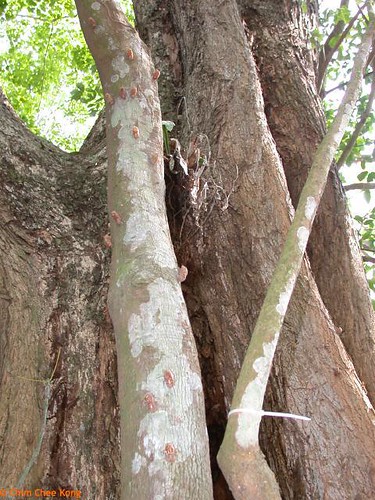Excerpts from Waller (2001)
"The low lying mangrove swamps have been reclaimed from time to time for prawn farms. Traditionally, sea water is controlled by sluices in such a way that salt water containing natural prawn fry is impounded until the prawns are ready for harvesting. Large immediate earth berms (mounds) are sometimes used to contain the sea water and these often support a mangrove flora, especially if abandoned. They are also burrowed into by mud lobsters, which can cause leakage. It is considered important to prevent fresh water streams entering the prawn ponds because they might dilute the salt content to the detriment of the prawns. Therefore one often finds such streams carefully separated from the ponds but running alongside them.

View from a sluice gate discharging water from an abandoned prawn pond - by NT
The small scale traditional prawn ponds are an asset to the ecology as well as the island's ambience, but the larger more modern variety have caused the destruction of large areas of mangrove. Not all of them have been an economic success. Two of them can be termed "intensive" because they add addtional artificial prawn feed to the water.

An inland fish farm - by NT
Out at sea may be seen the picturesque traditional kelongs ("V" shaped fish traps) which are now giving way to the caged fish breeding pens, and it is said that the smaller fish caught in the traps are now sometimes used as food for the caged variety. Traditionally, kelongs also provided temporary accommodation for the fishermen, and can now be let out to visitors at weekends."
[Editor's note: Read the latest plan to build 10 fish farms in the waters off of Ubin! Other relevant read includes more about the high tech aquaculture prawn farm on Ubin who produces Ubin Krisp.]
--------------------
References:
Waller, Edmund (2001) "Landscape Planning in Singapore" (Singapore: Singapore University Press) pp.165-171











